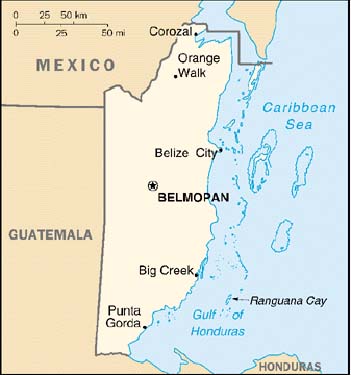

Status Quo Side: Belize government
Non-Status Quo Side: Guatemalan government
Region: Western Hemisphere
Conflict Type: Interstate
Issues in Dispute: Independence
In 1788 Spain granted Great Britain permission to settle the area today known as Belize while retaining formal sovereignty. Britain assumed control when the Spanish Empire was dismantled in 1816, and in 1859 signed a treaty with Guatemala fixing the borders. Renamed British Honduras, the area became a Crown colony in 1862. Guatemala, in 1933, registered a claim that Britain had reneged on a 1859 treaty provision, thereby nullifying it. Guatemala claimed sovereignty as the legal heir to the Spanish empire in the region. British Honduras voted to remain under British protection with a greater degree of autonomy. In 1948 Guatemala closed its borders with British Honduras. Britain sent 3 warships to the area and tensions eased.
Guatemala severed diplomatic relations with Britain. In 1964 Britain granted British Honduras self-government but continued its military presence. The country was renamed Belize in 1976. Britain had taken the case to the UN and in 1980 the UN General Assembly adopted the Belizean independence resolution by 125-1 (Guatemala). The Assembly demanded that Guatemala enter negotiations with Britain and Belize. However a proposed agreement between the three parties caused widespread local unrest, and further negotiations broke down. Britain and Belize agreed on a constitution and independence was granted in September 1981. Guatemala refused to accept it.
Following Belize's admission as a full member of the OAS in January 1991 and recognition by Honduras in February, Guatemala in September officially recognized Belize's sovereignty and independence. In return Guatemala was granted the use of Belizean ports and control over a 3-mile sea corridor permitting access to the port of Puerto Barrios.